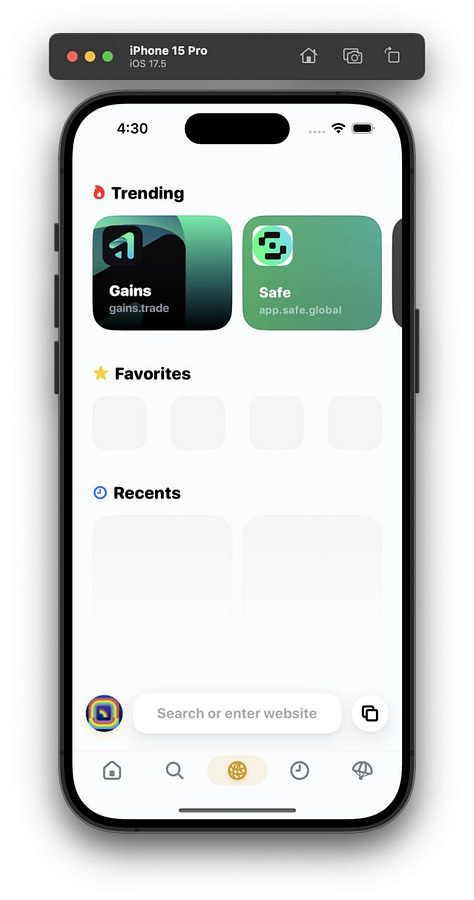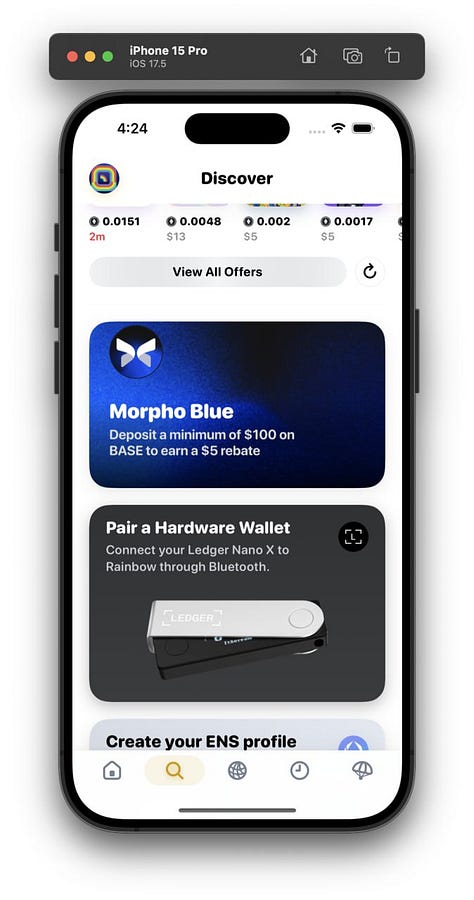Rainbow and Spindl are partnering
The threshold is the limit, the boundary, the frontier that distinguishes and opposes two worlds — and at the same time the paradoxical place where those worlds communicate, where passage from the profane to the sacred world becomes possible.
Mircea Eliade, The Sacred and the Profane (1957)
Wallets apps are a unique consumer experience. As both the portal to, and transaction layer for, consumer crypto: it’s where a user both does something onchain and, increasingly, discovers what to do there. If done well, transacting in a wallet is as seamless as the Apple Pay-powered shopping experience inside TikTok, or any mobile ecommerce purchase these days.
Take Rainbow wallet for example, with their In-app Browser. Clicking on anything opens the browser; connecting a wallet to an app is an in-context pop-up; doing a transaction is just another clicked pop-up. It’s about the same number of clicks as ordering DoorDash or buying inside a Shopify store.
Or take Rainbow’s integration with Mobile Wallet Protocol (MWP), which allows apps to seamlessly send a transaction to a mobile wallet (which then gracefully sends the user back to the original app). Again, the ease recalls that of Apple or Google Pay used inside a mobile browser: a pop-up confirmation screen…and the transaction is done.
The crypto user experience has been historically (and hysterically) bad, but wallets like Rainbow are the leading the way to a very different world. Which is why we’re excited to announce that we’re partnering with Rainbow to power their featured apps and offers inside their mobile wallet. Web3 builders are desperate to show relevant content to users based on their onchain behavior, and wallet-aware publishers (particularly wallet apps) are interested in revenue streams beyond referral fees. Wiring the two sides together—the consumer app with user attention and the dapp looking to grow—has been Spindl’s mission since it was founded two years ago, and it’s finally happening at scale.



With the full Spindl attribution, audience segmentation, and campaign management product, projects interested in growth get Web2-quality visibility and measurement in their marketing. No offchain data is ever used to surface content inside the publisher—the only data involved is onchain—assuaging privacy concerns. Finally, by enabling projects to share revenue with publishers on provably real user engagement, consumer crypto apps finally have a viable business model that can pay for a new Internet.
Much like Yahoo! and AOL were once the gateways to the early Internet, well-designed, smooth wallet experiences like Rainbow’s will be absolutely critical for turning on growth in crypto. No other type of publisher comes close in terms of presenting users with relevant offers and content in a crypto-native context. As wallets feature more and more content beyond DeFi transactions, even more opportunities to engage crypto-native users present themselves. The crypto growth flywheel is finally here.



